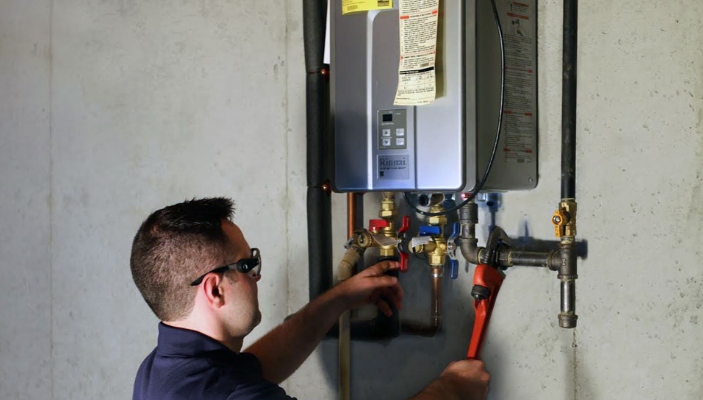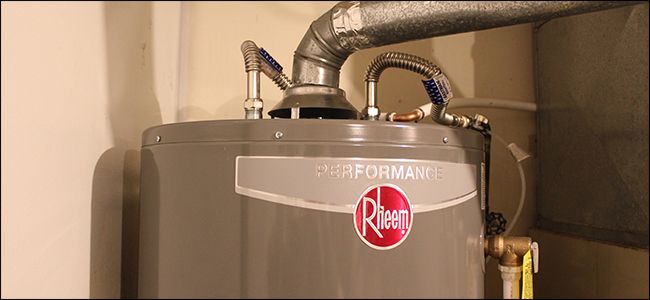Ensuring Durability of Your Home's Hot Water System: Care Advice
Ensuring Durability of Your Home's Hot Water System: Care Advice
Blog Article
The content down below in relation to How to Maintain Your Water Heater & Prolong its Life is without a doubt informative. You should look it over.

Hot water is crucial for everyday convenience, whether it's for a refreshing shower or cleaning recipes. To guarantee your warm water system runs efficiently and lasts much longer, normal maintenance is crucial. This article supplies practical ideas and understandings on how to preserve your home's warm water system to avoid interruptions and pricey repair work.
Intro
Maintaining your home's hot water system may appear difficult, yet with a couple of basic actions, you can ensure it operates smoothly for many years ahead. This overview covers everything from recognizing your warm water system to DIY maintenance suggestions and understanding when to call in professional assistance.
Importance of Preserving Your Warm Water System
Routine maintenance not just expands the life-span of your warm water system but also guarantees it runs effectively. Neglecting upkeep can lead to decreased efficiency, greater energy expenses, and even early failing of the system.
Signs Your Hot Water System Demands Upkeep
Understanding when your warm water system requires attention can stop significant concerns. Keep an eye out for indicators such as inconsistent water temperature, unusual noises from the heating unit, or rustic water.
Flushing the Water Heater
Flushing your hot water heater eliminates debris accumulation, enhancing effectiveness and extending its life.
Checking and Replacing Anode Rods
Anode poles protect against rust inside the container. Inspecting and changing them when worn is vital.
Complex Concerns Calling For Professional Help
Instances consist of major leaks, electric troubles, or if your hot water heater is consistently underperforming.
Routine Professional Upkeep Advantages
Specialist upkeep can include complete inspections, tune-ups, and making certain conformity with safety criteria.
Checking and Changing Temperature Setups
Changing the temperature settings ensures optimal efficiency and safety and security.
DIY Tips for Maintenance
You can do a number of maintenance tasks on your own to keep your warm water system in leading condition.
Looking for Leaks
Routinely inspect pipelines and connections for leakages, as these can cause water damage and greater bills.
Recognizing Your Warm Water System
Before diving right into maintenance jobs, it's valuable to understand the fundamental components of your warm water system. Normally, this includes the hot water heater itself, pipes, anode poles, and temperature controls.
Regular Monthly Maintenance Tasks
Normal monthly checks can aid catch small issues prior to they rise.
Checking Pressure Relief Valves
Examining the pressure relief valve ensures it operates correctly and protects against excessive stress buildup.
Protecting Pipelines
Insulating warm water pipelines decreases warmth loss and can save power.
When to Call a Specialist
While DIY upkeep is beneficial, some problems call for professional experience.
Conclusion
Routine upkeep of your home's hot water system is vital for performance, durability, and price financial savings. By complying with these pointers and knowing when to seek expert aid, you can make certain a reputable supply of warm water without unanticipated disruptions.
How to Maintain an Instant Hot Water Heater
Before tinkering with your hot water heater, make sure that it’s not powered on. You also have to turn off the main circuit breaker and shut off the main gas line to prevent accidents. Also turn off the water valves connected to your unit to prevent water from flowing into and out of the appliance. 2. When you’re done, you have to detach the purge valves’ caps. These look like the letter “T†and are situated on either side of the water valves. Doing so will release any pressure that has accumulated inside the valves while at the same time avoid hot water from shooting out and burning your skin. 3. When the purge valves’ caps are removed, you have to connect your hosing lines to the valves. Your unit should have come with three hoses but if it didn’t, you can purchase these things from any hardware or home repair shops. You can also get them from retail stores that sell water heating systems. Read the user’s manual and follow it to complete this task properly. When the hosing lines are connected, open the purge port’s valves. 4. You should never use harsh chemical cleaners or solutions when cleaning your unit. Make use of white vinegar instead. It should be undiluted and you’ll probably use about 2 gallons. 5. Now flush your water heater. This task should probably take about 40 minutes. We can’t give you specific directions for this because the procedure is carried out depending on the type, model and brand of your heater. With that being said, refer to the user’s manual. 6. When you’re done draining the unit, you have to turn off the purge port valves again. Remove the hosing lines that you earlier installed on each of the water valves. Put the valve caps (purge port) back in their respective places and be very careful so as not to damage the rubber discs that are found inside these caps. 7. Now that everything’s back in place, check your user’s manual again to find out how to reactivate your water heating system. 8. Once it is working, turn one of your hot water faucets on just to let air pass through the heater’s water supply pipes. Leave the tap on until water flows smoothly out of it. https://www.orrplumbing.com/blog/2014/september/how-to-maintain-an-instant-hot-water-heater/

As a person who reads on Tips For Maintaining Your Hot Water Heater, I assumed sharing that blog post was important. Appreciated our posting? Please quickly share it. Let another person find it. Thank-you for going through it.
Click Here Report this page